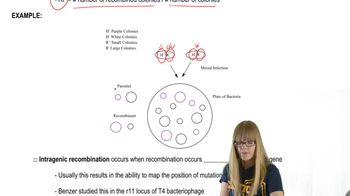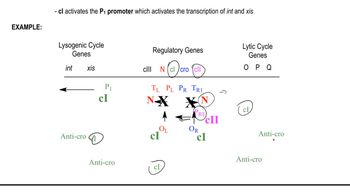Here are the essential concepts you must grasp in order to answer the question correctly.
Bacteriophage Structure and Function
Bacteriophages, or phages, are viruses that specifically infect bacteria. They consist of genetic material (DNA or RNA) encased in a protein coat. Understanding their structure is crucial for comprehending how they interact with bacterial cells during the lytic and lysogenic cycles.
Recommended video:
Lytic Cycle
The lytic cycle is a viral reproductive process where the bacteriophage infects a bacterial cell, hijacks its machinery to replicate its own genetic material, and ultimately causes the cell to burst (lyse), releasing new phage particles. This cycle results in the immediate destruction of the host cell.
Recommended video:
Decision Between Lytic and Lysogenic Cycles
Lysogenic Cycle
In contrast, the lysogenic cycle involves the integration of the phage's genetic material into the bacterial genome, forming a prophage. This allows the phage to replicate along with the bacterial DNA without killing the host. The lysogenic cycle can switch to the lytic cycle under certain conditions, leading to cell lysis.
Recommended video:
Decision Between Lytic and Lysogenic Cycles
 Verified step by step guidance
Verified step by step guidance Verified video answer for a similar problem:
Verified video answer for a similar problem:



 4:29m
4:29m